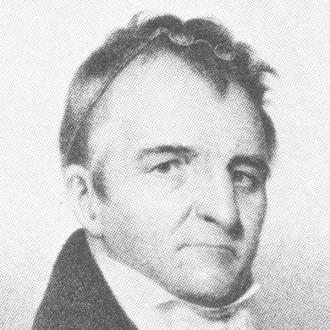Chief Engraver of the U.S. Mint: William Kneass
Second Chief Engraver of the US Mint
William Kneass
William Kneass; the second Chief Engraver of the United States Mint.
You may not be as familiar with him as say Charles E. Barber, or maybe even Christian Gobrecht --who came after Kneass-- but he was an important man in the history of Chief Engravers.
William Kneass was born in Lancaster, Pennsylvania on September 25, 1780. I can’t find much more than that information, so we’ll have to settle with that for now.
Kneass served in the War of 1812 while he was in his early 20’s. He was a volunteer associate of the field engineers. Kneass worked on constructing fortifications on the western front of Philadelphia.
He worked as a plate engraver for books during this time, and dabbled in aquatints briefly.
In Philadelphia on Fourth, right above Chestnut St. he had his engraving office; which he opened in 1815. This was a pretty popular spot for “leading wits and men of culture” to meet and well I suppose be witty and cultured!
On January 29, 1824, William Kneass was appointed as the Chief Engraver of the United States Mint. By this time he had been married a while and had a few children. His son Samuel Honeyman Kneass went on to become a notable civil engineer and architect in Philadelphia. In total William Kneass had 6 children with his wife Mary Turner Honeyman Kneass.
In 1830 he redesigned the quarter, and in 1834 redesigned the gold coinage. In 1835 Samuel Moore, Director of the US Mint wrote “Mr. Kneass, our present engraver… is an acceptable, popular and very useful officer. Perhaps one of the most rapid in execution in the U. States. I do not know whether another could be found, whose celerity in his profession could have sufficed to furnish all the dies we have necessarily employed within the last five years.” - Taxay, Don (1983). The U.S. Mint and Coinage (reprint of 1966 ed.). New York, N.Y.: Sanford J. Durst Numismatic Publications. ISBN 0-915262-68-1
In August of 1835 sadly Kneass suffered a debilitating stroke that left him paralyzed on his right side. As he was unable to do nearly all die work, Christian Gobrecht was hired to assist as a second engraver. Gobrecht did most of the pattern and die work until Kneass passed away 5 years later in office August 27, 1840.
Kneass was well remembered as “a warm gentleman of the old-school, who had the rare quality of engaging and winning the esteem and affection of children and youth”.
Much of what Kneass was known for in the Mint was making modifications to existing designs and innovating the process of making coins. He was credited with creating a restraining collar for coins while they’re in the process of being struck. This restraining collar provided support to minimize the spread of the coin but also maintaining the thickness and reducing the diameter all at once.
After William Kneass suffered the stroke, it was kept very much under wraps. The public didn’t even know what had happened until years after he passed away. Because of that, Kneass actually received credit for many of the coin designs that Christian Gobrecht created.
After William Kneass passed away, the mantle was passed and naturally Christian Gobrecht was appointed Chief Engraver of the United States Mint.
Check out some of our other articles in our Chief Engravers of the US Mint Series!
- Robert Scot
- William Kneass
- Christian Gobrecht
- James B. Longacre
- William Barber
- Charles E. Barber
- George T. Morgan
- John R. Sinnock



